When I met Victor Kislyi at the recent Game Developers Conference in San Francisco, he was happy and tired. The CEO of Wargaming was happy because, after seven-plus years, the team finally moved the free-to-play PC game World of Tanks to its 1.0 edition.
I enjoy kidding Kislyi about why it takes so many people — 4,500 employees — and so many years to get to version 1.0. But Kislyi said the team is passionate about getting to perfection. The tank team battle game — which Will Wright once called a first-person shooter for old people — now takes place in full high-definition, and it has destructible environments. Wargaming also launched a World of Tanks augmented reality experience.
Of course, now that means it’s time to get World of Warships into ship-shape next. Fortunately, Kislyi said, the teams at Wargaming will be able to share what they’ve learned.
As for why so many tens of millions of people are still playing the game, he said, “I compare World of Tanks to football, European football, or any big sport. The rules are relatively simple. You hit the ball into the goal and you don’t touch it with your hands. A bunch of kids can play it on the beach in Rio de Janeiro. You can play it in the backyard. You can kick a ball around with your son for practice. And it goes all the way from there to Manchester United, the World Cup, whatever, this whole show business bonanza around it and computer game licenses. That’s all football, if you think about it. You, as a human, can choose any level of engagement. I think the same is true of World of Tanks. You can just blow stuff up and have fun. That’s it. That’s what I’m doing.”
June 5th: The AI Audit in NYC
Join us next week in NYC to engage with top executive leaders, delving into strategies for auditing AI models to ensure fairness, optimal performance, and ethical compliance across diverse organizations. Secure your attendance for this exclusive invite-only event.
Here’s an edited transcript of our interview.
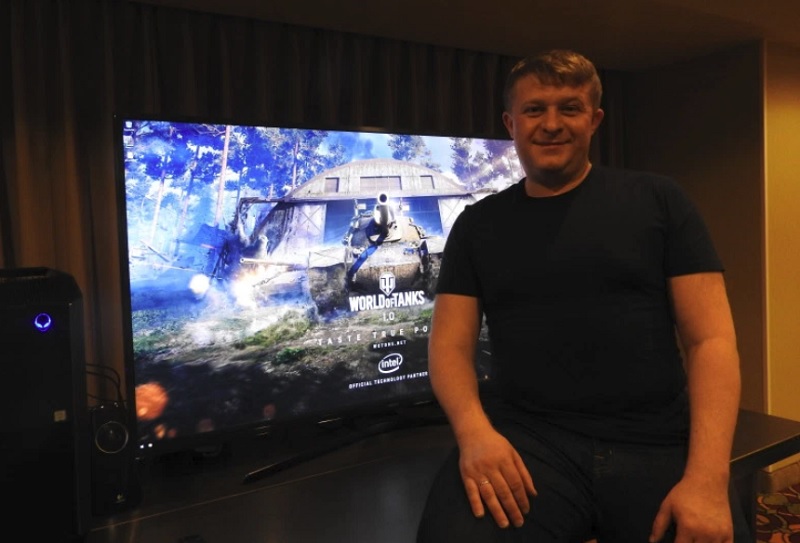
Above: Victor Kislyi is CEO of Wargaming.
GamesBeat: What’s interesting to you at GDC this year?
Victor Kislyi: Obviously, these days, we’re all about 1.0. We’ve been working on this, not showing it to anyone, for two, two and a half years. The short story would be—the old Big World client technology goes into history. We have new technology. It took a little bit longer, because we have to redo all the content for World of Tanks — maps, tanks, explosions, effects — to put the whole game back together in the new reality.
We revamped into full HD everything. I’m in a position to say we can be on the same level with Frostbite for Battlefield. If you think about it, World of Tanks has 30, 40 maps, two or three square kilometers each. In total it’s 100 square kilometers of highly detailed everything — butterflies flying, flowers, buildings, German cities, Russian steppe, Ukrainian village, jungles, glaciers. You’ve seen the maps. Now it looks like Star Wars, Naboo, Tatooine, and now you can play it.
The game, of course, stays the same. Everything you had before is there. It launches in the U.S. tonight. The doors open and you update. We did this auto-updater in the background, for everyone who didn’t remove the check box.
GamesBeat: It just appears.
Kislyi: Russia was a day before. It was about to sleep off the jet lag and then I got a message. “Things are good.” What do you mean, things are good? “We launched and it works.” Oh my God, no sleep. I got a good ping playing from America, on Russian servers. It was a 140 ping, and it was enjoyable.
GamesBeat: It didn’t look that bad before.
Kislyi: Well, we have some comparisons to answer that. You can see this map here, reworked over the last five years. It’s a lot of technology, and it’s interactive, destructible. The shock waves, the explosions, the craters. It’s a lot of work. Now the maps are endless. It used to be we had a kind of wall surrounding it, but now everything outside the play area is really beautiful too.
If you move through the water in a tank, it makes those waves and splashes. The tank will get wet, and that wetness goes away as it dries. The same goes for snow. If you’re in a snowy map and doing these parking maneuvers, you’ll get covered with snow. Then the snow goes away gradually. It’s very realistic now, for a triple-A game.
This really unties the hands of our team now. They’ve been working for two years, and nobody’s seen the results of that work. It’s only today, when the doors open. Now the developers are free to go on to new maps, new modes, new effects. The old engine is dead, which is going to be very good for the game.
GamesBeat: Did users request this? The same game, but with Frostbite?
Kislyi: Many of our users have been comparing it with Frostbite and everything else. The best part of it is that it doesn’t increase your system requirements. The whole point of the new technology—it’s very new rendering technology, done within Wargaming. This is our thing. We have to operate in Russia and in China. Your old computer, if it runs World of Tanks now, before today, it will run World of Tanks in no worse quality tomorrow, and in many cases better quality.
PC gaming is back. Let’s put it like that. People buy Dells and Razers and Alienwares and spend $2,000 on a rig to play extremely high-fidelity games. Now World of Tanks is one of those games. It’s in the top tier. Henry Ford once said, “If I asked my customers what they wanted, I would have made a faster horse.” Sometimes that’s the whole point of innovation. We didn’t get many requests for a touch screen version either. As a company you have to do things that aren’t necessarily the result of user polls. You just do it, and then everyone says, “Wow.” We’ve been running for two days in Russia, which is a very critical region for gaming. They love it. The media loves it, but most important, the players love it.
GamesBeat: How many people do you have working for you now?
Kislyi: Four thousand-five hundred. The whole World of Tanks team, if you combine publishing and development, that’s 800-ish, give or take. Some people are shared, especially technology people. Specifically for this update, there were maybe 200, 300 people, working busy days and nights.
It’s time to revamp Wargaming. We used to have a so-called functional structure, where global development, global publishing, finance, and so on—development and publishing would have inside themselves their own silos resembling products. Now, since last September-ish, we have a product structure. It sounds banal, like a paper exercise, but it has implications inside Wargaming. Now products, and obviously World of Tanks is a product, consolidate all their development and publishing power underneath a product.
World of Tanks PC is king. The heads of this product, the product group, the top five or six people, they decide what needs to be done, and when, for the sake of this product. Their financial incentives are very much aligned with the success of the product. Their bonuses, give or take, are 10 percent from the EBITDA of the product. Our finance department is able to attribute all the expenses, and obviously revenue is easy. Money from Tanks is money from Tanks. Expenses are everything, business trips, paperclips, whatever it needs to be. That’s automatically attributed through our SAP system. It’s a bit bulky, but it works. It’s very robust.
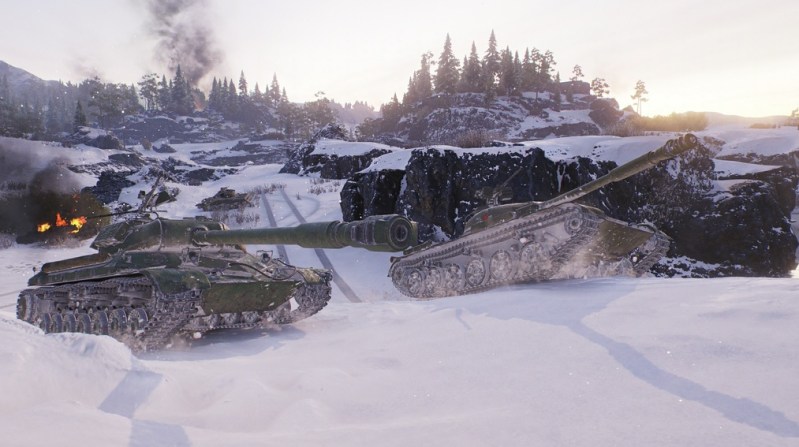
Above: World of Tanks
GamesBeat: Why did you need to reorganize?
Kislyi: When World of Tanks was the only game, there were no doubts about this. We were entrepreneurial. That was what drove innovation. We knew that. When we became a big company, that entrepreneurial spirit goes away slightly. Instead we have bureaucracy, vice presidents, boards, all that stuff. There are books about this, right?
Ironically, I wouldn’t have believed this would happen to me, to my company. But if you don’t prevent it proactively, it happens. You end up with layers of VPs and SVPs and politics-shmolitics and all that stuff. We had it. I have to admit it. We had internal wars, in effect. One little thing takes months to happen. People care less about the results and more about their career growth. We weren’t that bad. We weren’t the worst company in the world. But when you have multiple products — Warships, Blitz, console — people have to be incentivized to care about the players of their products.
At this point we’ve had 150 million people try this game. Dozens of millions are playing today. Obviously we hope that with 1.0, it’s a good reason for some of the people who’ve left the game to come back and see what we’ve done. We have to keep caring about those players for the next decade or two or three. We’ll soon celebrate ten years since the idea. This year it’ll be eight years since launch. The game isn’t falling off. There’s no plateau. It’s growing. But not on its own. You have to do these things to keep growing.
GamesBeat: Why did you take eight years to call this 1.0? Is that symbolic in some way?
Kislyi: If you looked in the client yesterday, it would have said 0.9 something. That wasn’t just formalism. From time to time we had this discussion. Why don’t we call it 1.0? Believe it or not, at Wargaming we do have an understanding of perfection. In Japanese they say kaizen. I tend to think, or I hope, that people view me as a perfectionist in some things, especially when it comes to games. We have many, many guys and girls who want things to be perfect.
With this one, we run extensive tests on test servers. It works. It doesn’t crash. It runs on very old machines. It was a good time. Only when we realized that it’s that cool, and it works, we said, “You know what? Maybe—“
Of course, 1.0 is kind of a marketing trick, if you think about it. We called it Rubicon a couple of years ago and that didn’t work out very well for us. This time, we didn’t jump the gun. First, we made it. We made it sure it works. It runs on low-spec machines. Then we said, “Let’s do our marketing with this one dot zero.” That was the easiest part, trust me.
GamesBeat: The “taste true power” messaging seems—you’re very familiar with the people who like it, the target audience.
Kislyi: If you play World of Tanks on a good machine with a big screen and a good sound system, it trembles. You feel like you’re in a tank, even though you’re in your bedroom.
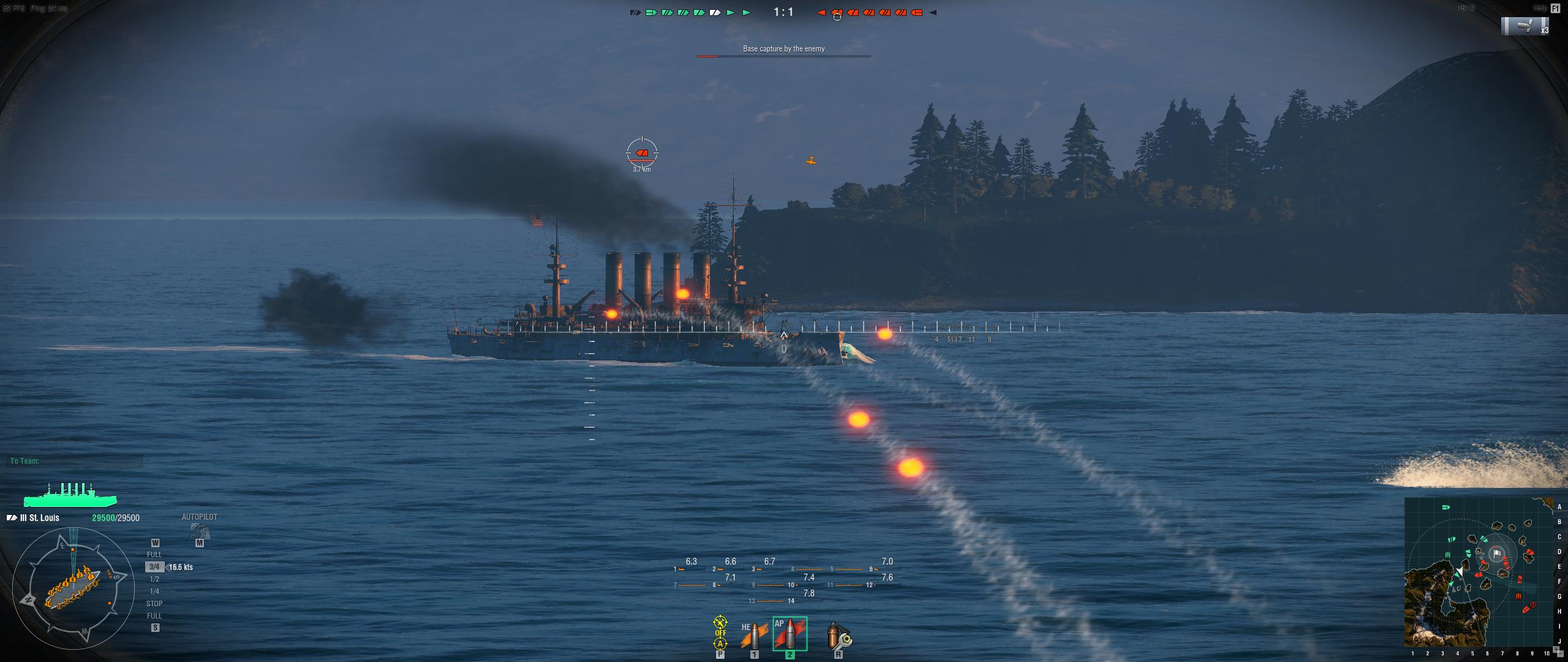
Above: It can be hard to hit something the length of 10 school buses.
GamesBeat: So now World of Warships looks terrible, and you have to fix that?
Kislyi: [Laughs] Warships, it’s a separate team. They share some technology, but—healthy internal competition is happening at Wargaming. That’s obvious. Warships people are really ambitious to kick World of Tanks ass. In a good sense. In Europe, for some period, we were actually happy to find that the market fit—of course Tanks is the best when you take the former Soviet Union into account, but World of Warships is as big in Europe and America as Tanks, which is not a bad thing.
At Wargaming we share. That’s a rule. You have your own P&L as a product, but many things upon creation become Wargaming’s property, and they can be shared. If you look at World of Warships Blitz, although it was done in China, technically speaking, with lots of our guidance—if you look at the backgrounds, the key art, the music, the interface, and the ship models, those are from World of Warships, even though it’s a separate product. We share stuff. That’s the best way to achieve overall success.
I don’t even have to talk to the people on World of Warships. I know they’re thinking about improving their performance and visuals.
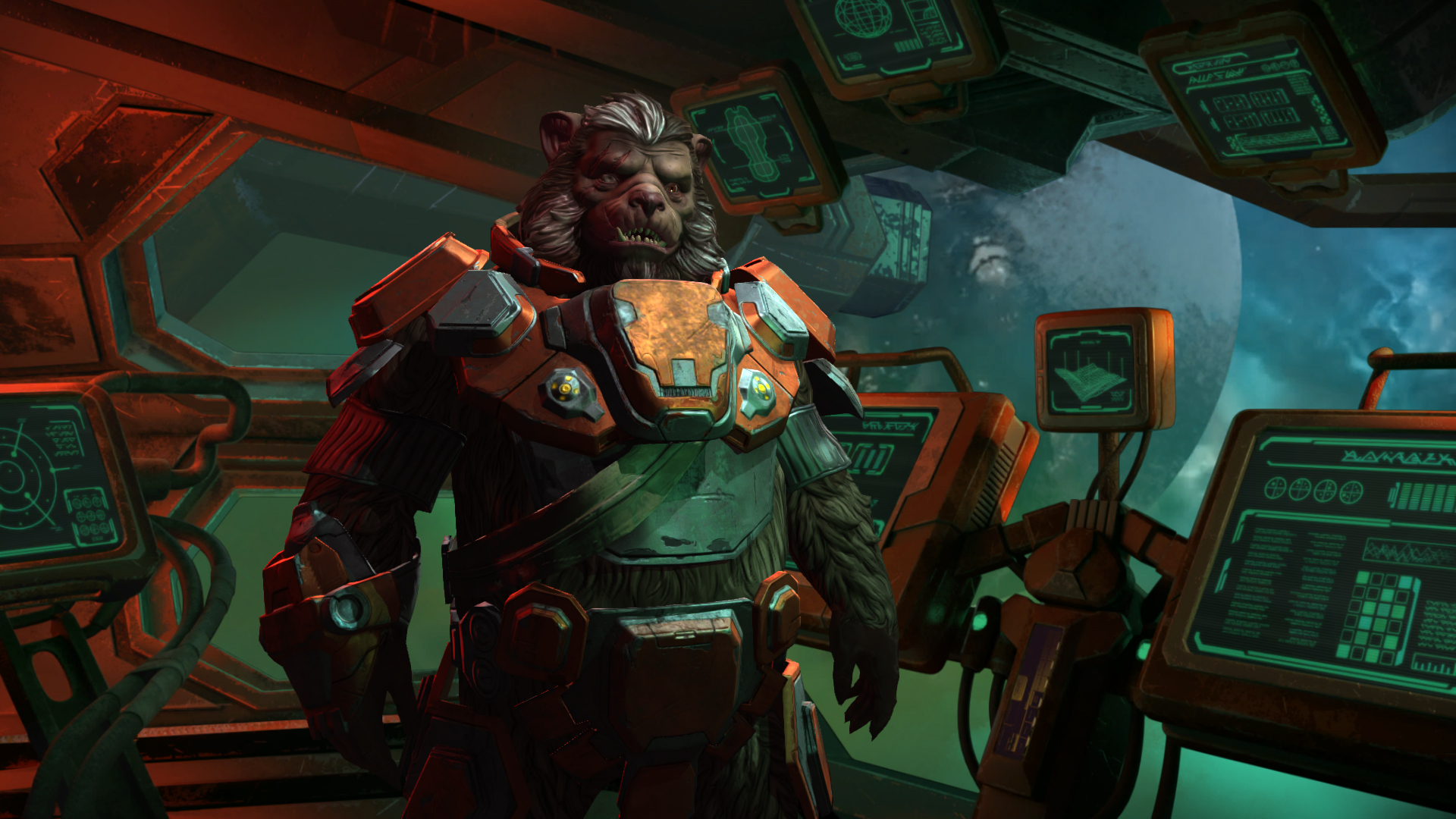
Above: Master of Orion is back.
GamesBeat: What else do you have cooking? Do you have any initiatives around Master of Orion?
Kislyi: It’s funny that you mention Master of Orion right now. We did what we did, giving back to the community, the good old turn-based game. Some people hate me for this, but I keep playing Civilization, irrespective of 1.0 or World of Warships. I just love Civilization. I play it every week, a couple of hours. We tried to do the same with Master of Orion, and it’s up to the players to judge us. We have the franchise and the IP, but we’re not doing anything right now.
We’re doing a big push to mobile now. What I did structurally, I separated mobile into a very separate division. Now we have a studio in Helsinki, a studio in Copenhagen, an operational center in Berlin, and our Chinese partners. It’s like a miniature copy of Wargaming, and it’s very independent. It’s using services like legal and finance and so on, and they have access to all the IP, but it’s a separate business unit with its own merits.
We even have games for girls now. We have this company called Melsoft. We had to use a different name, because games for girls—maybe Wargaming isn’t the best brand there. But we have this game called My Café, a free-to-play mobile game where you run a café. You buy equipment and make recipes and all that stuff. I don’t play it, but it’s growing. It’s very healthy.
GamesBeat: Are you going to keep on expanding in that way?
Kislyi: Let me give you some perspective. My Café happened to be an investment project that took literally none of my time or involvement. I wasn’t having any sleepless nights testing that. With Tanks, I did. We acquired a small company in Minsk doing casual games. We gave them some money, made some leadership changes, and said, “Here’s your investment. Now you’re pretty much on your own. Use all our services, our business platform.” They’re not so big that they stretch our legal department.
They were under the radar, quietly finding their way for two, two and a half years, and then this game My Café shot up. Google and Apple are very happy with the numbers and retention and all that stuff. But I don’t have to do anything for that particular game. It just happened on its own. Speaking for myself, my passion is tanks, ships, planes, this military hardcore manly stuff. I’m very proud of it.
GamesBeat: It’s still going strong. That’s surprising in some ways. But live operations is much more pervasive throughout the whole industry now. Electronic Arts is talking in their quarterly finance calls about live operations, the investments they put into making Madden a year-round game.
Kislyi: We use different terms. For us it’s just management, customer support, deploying server infrastructure—just normal hygienic things you have to do. You can call it whatever you want. We’ve been doing it since 2010. That’s how we got so big. We’re doing what needs to be done for our players in the first place.
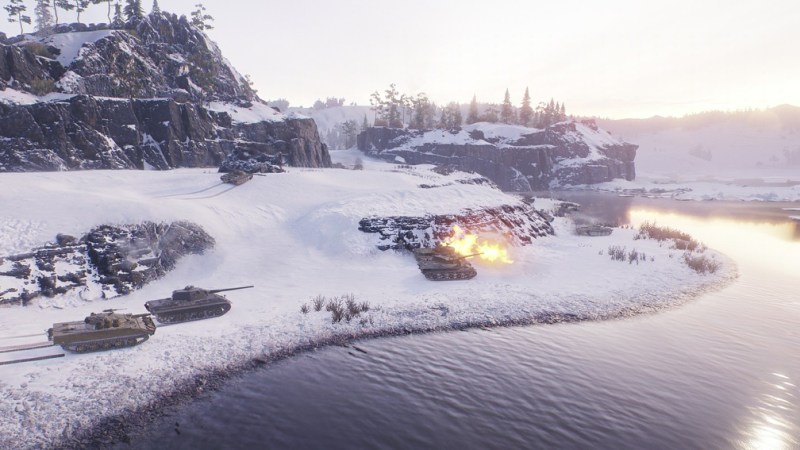
Above: World of Tanks
GamesBeat: I don’t know if it means a lot right now, but some companies are talking a lot about games with “ridiculous computation.” Amazon is saying they have these giant e-commerce servers, Amazon Web Services, the cloud living up to what it can do. You can take that and use it in games. If you have an infinite amount of computing power, what can you do?
Kislyi: A little disclaimer. I’m not an expert in what you’re describing. I was at Google’s conference and everyone was talking about those big companies, where they’re interested in pushing their platforms. Web services and AI components as a big platform for various businesses to use, not just games. I don’t know. When it comes to games, you still render on the client. You have to do that. I wish streaming was faster, but it’s not yet there universally, with bandwidth and so on.
Here’s my philosophical statement. I’m very grateful, first of all, to Microsoft and IBM and Intel, who back in the day, before I was even born, started creating this global infrastructure of computers, the internet, Windows, all those things that make a universal market, a global one. With a press of the button, within 48 hours, our game is pretty much everywhere in the world. You couldn’t do this in the ‘70s. That’s one thing. Likewise, we have mobile platforms that didn’t exist before. Companies are making billions there.
If Amazon gives you free or dirt cheap hosting and computational power and so on, that’s for the good. Not necessarily for games, but maybe for curing cancer, or finding extraterrestrial civilizations, or solving global warming. Science keeps going. We just handle games. As a citizen of this planet, I’m really happy to see how fast we’re advancing technologically since the ‘80s.
GamesBeat: Still, you have a pretty good use of computing power here. Better than just mining for bitcoins.
Kislyi: We give people these worlds, like World of Tanks. I don’t need to give you the whole pitch. But you come home from work, a family man with a wife and kid, and when everyone goes to sleep you have an hour, or during the weekend. You play online with your buddy, or with your son sitting next to you.
Right now I play Clash Royale with my wife. That’s our—we don’t need actual bonding, but it’s a lot of fun. Together we just rock. We win nine out of 10 in couples. Although they don’t give you crowns for that. But when we play together we win nine out of 10. She’s very happy, and so am I.
GamesBeat: I remember Will Wright said Tanks was a first-person shooter for old people. You didn’t need split-second reactions to have a good time.
Kislyi: I compare World of Tanks to football, European football, or any big sport. The rules are relatively simple. You hit the ball into the goal and you don’t touch it with your hands. A bunch of kids can play it on the beach in Rio de Janeiro. You can play it in the backyard. You can kick a ball around with your son for practice. And it goes all the way from there to Manchester United, the World Cup, whatever, this whole show business bonanza around it and computer game licenses. That’s all football, if you think about it. You, as a human, can choose any level of engagement.
I think the same is true of World of Tanks. You can just blow stuff up and have fun. That’s it. That’s what I’m doing. I’m not a part of any clan or esports group. From time to time I just feel like opening up my laptop, or at home I have a station, and running my mouse through a couple of battles. Then I go to sleep.
But still, you have coordination, teamwork, some kinds of psychology. The game is brilliant in a sense that it has a very healthy percentage of “Wow!” moments. Snatching victory from the jaws of defeat. That doesn’t happen in every battle, but sometimes you’re the one who saves the day, and you get to be very proud of yourself.


